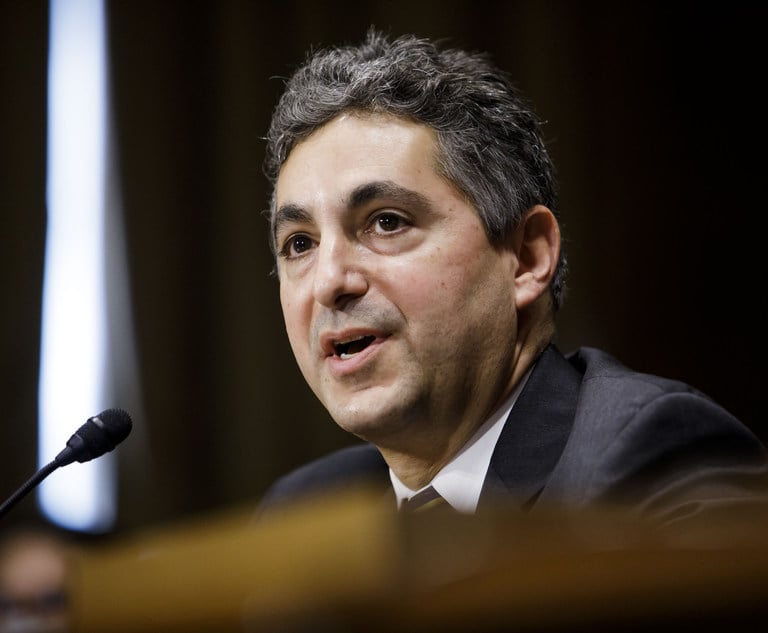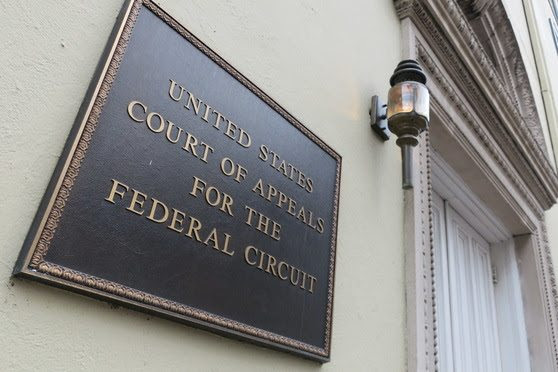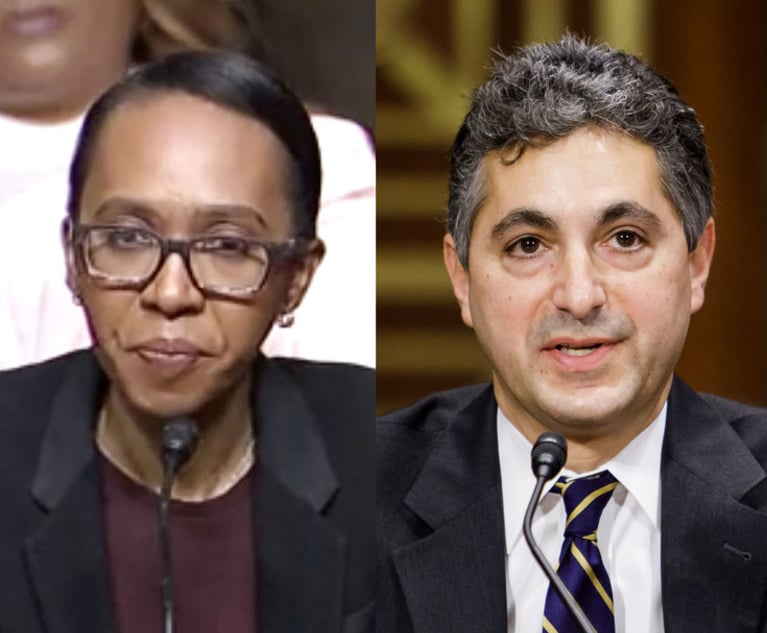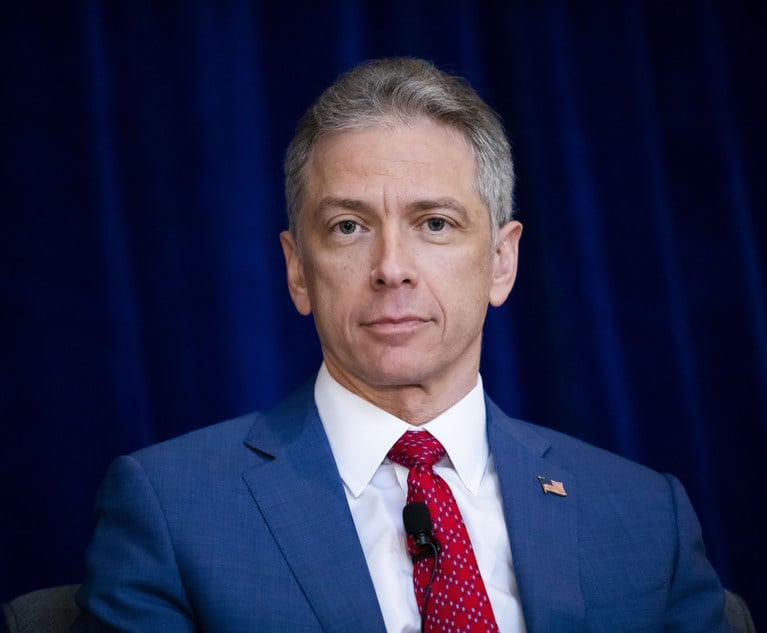Skilled in the Art: What Do Jurors Know About Damages? | Another Bad Diagnosis on 101 | Lyft Wants Out of SDNY
Time Warner says the $140 million verdict it got hit with last year was unduly influenced by admission of a previous verdict against a different party. Federal Circuit judges seemed to agree there should be some limits on such evidence.
October 05, 2018 at 06:09 PM
10 minute read
Welcome to Skilled in the Art. I'm Law.com IP reporter Scott Graham. Today I've got a concrete question about hypothetical negotiations: Should a previous jury verdict involving the same patent be admissible to help a new jury determine damages? There's $140 million riding on this question, as I'll explain below. I've also got news of the latest and likely futile attempt to soften up Section 101 in the medical diagnostics area, and an update on the Lyft patent infringement case. As always you can email me your thoughts and feedback, and follow me on Twitter.
➤➤ Would you like to receive Skilled in the Art as an email? Learn more.
Jury Verdicts: The Worst Evidence of Damages?
The ghosts of verdicts past haunted the Federal Circuit this week as Time Warner Cable and Kirkland & Ellis partner John O'Quinn tried to shake off a $140 million judgment for patent infringement.
Sprint obtained the judgment last year following a Kansas trial over VoIP technology. Its damages evidence included Sprint's 2007 verdict against Vonage over the same patents in which jurors awarded $1.37 per subscriber.
The Time Warner jury awarded $1.37 per subscriber.
Time Warner and amici curiae Intel and Dell argue that prior verdicts involving different parties should never be part of the hypothetical negotiation calculus that's presented to juries to determine patent damages. O'Quinn argued Mondaythat the Vonage verdict was especially prejudicial because it was based on the 25 percent “rule of thumb” that the Federal Circuit has since outlawed in Uniloc.
“It's not like the verdict came in to be used to test someone's credibility or some entirely ancillary purpose,” O'Quinn said. “It was offered precisely for damages, the very issue on which the error occurred. Respectfully, this is a wolf in wolf's clothing.”
That's one of the best soundbites I've heard in some time at the Federal Circuit. Nevertheless, Judges William Bryson and Raymond Chen seemed to take pleasure at poking holes in O'Quinn's theory—and then his opponent's.
Bryson noted that the hypothetical negotiation in Time Warner's case would have taken place in 2010, a year before Uniloc. “Why isn't it perfectly permissible” then to rely on the Vonage verdict, “just as a datapoint that the parties would have been aware of?”
O'Quinn began by arguing that the hypothetical negotiation is “a legal fiction.”
“Right,” Bryson replied, “but we live with it.”
Hypothetical negotiations also exclude unreliable information, such as comparable licenses that are overly influenced by settlement considerations. The Vonage verdict falls in that category, O'Quinn argued.
Bryson also pointed to Applied Medical Resources v. U.S. Surgical, a Federal Circuit decision that approved the admission of a prior verdict. O'Quinn argued that the verdict was admitted in that case to prove willfulness, but Bryson disagreed, explaining he'd reviewed not only the opinion but the briefs that were filed in the 2006 case. “Hypothetical negotiation was a separate argument from willfulness, as I read the record in that case,” he said.
So it sounds like an easy ride for Sprint's attorney, Finnegan, Henderson, Farabow, Garrett & Dunner partner J. Michael Jakes, right? Not by a long shot.
Bryson began by telling him it “seems to me almost bizarre that we have the Vonage verdict playing such a central role” in the Time Warner case. Sprint also introduced two comparable licenses that put damages at 5 percent of Time Warner's VoIP revenue—which was pretty close to the $1.37 per subscriber figure. “I'm not sure why we ended up in this very strange circular maneuver” with the prior verdict, the judge said.
Jakes said Sprint had simply been “trying to translate this amount into something that had previously been the basis of the parties' relationship, which was a per subscriber, per month cost.”
Chen said it was hard to believe that the $1.37 figure was “just a datapoint in the constellation of datapoints” on damages, when the jury's verdict “just happened to be to the hundredth decimal point the exact same verdict as the Vonage jury.”
Jakes argued that the $1.37 figure was actually less than Sprint would have obtained under its comparable licenses. Plus, Sprint and Time Warner had discussed the Vonage verdict in their actual licensing negotiations, not just the hypothetical ones, Jakes said.
It sounded as if Bryson and Chen were looking beyond this one case. “I have to say, I find the idea of relatively free use of prior verdicts troubling,” Bryson told Jakes. A patentee would never be allowed to convene eight expert witnesses and present their valuation without cross examination, he said. “Why is that fundamentally different from introducing the verdict of eight lay people at the end of the trial?”
Chen said he shared the concern that we “can't in a freewheeling way admit jury verdicts left and right.” What, he asked, would be the limiting principle?
“Is it comparable, and is it something that would be considered in a hypothetical negotiation,” Jakes replied. “And the answer to both of those is yes.”
The Definition of Insanity Is …
If there were an award for hitting your head against the wall at the Federal Circuit, Quest Diagnostics and its subsidiary Athena would have to be in the running.
Athena is the latest medical diagnostic company to challenge the Supreme Court/Federal Circuit Section 101 jurisprudence on laws of nature and natural phenomena.
The scientific advance claimed by Athena and co-plaintiffs Oxford University and the Max-Planck institute sounds genuinely valuable—a more accurate method of diagnosing the neuro-muscular disease myasthenia gravis.
But we've seen before that no matter how valuable the advance—be it a non-invasive test for fetal abnormalities or the identification of genes associated with breast cancer—the patents protecting them can still founder on Section 101.
But that didn't stop Athena from suing the Mayo Clinic—the same Mayo Clinic on the Supreme Court Section 101 landmark, represented by the same Fish & Richardson attorneys. Athena lost before U.S. Distrcit Judge Indira Talwani, but came to the Federal Circuit Thursday with amicus backing from the Biotechnology Innovation Organization, plus groups of law professors and practicing attorneys.
Fenwick & West partner Adam Gahtan told the court Talwani oversimplified the asserted patent claims, which involve using recombinant DNA technology to create fragments of a protein known as MuSK. “The specification goes into great detail about how the inventors found the binding sites on this very complex, enormous, trans-membrane protein,” Gahtan said. Those synthesized fragments bind with the autoantibody associated with myasthenia gravis.
Judge Alan Lourie sounded skeptical. “These claims are awfully simple,” he told Gahtan. “It's not clear to me how they differ from the other Mayo case.”
Gahtan gamely argued his position, while his opponent, Fish & Richardson partner Jonathan Singer, sounded a world-weary tone.
“This court and other courts have been through this,” Singer said. “I've been through this court arguing that the use of a non-natural material made something patentable, and that argument was rejected in the BRCA case. That simply doesn't get you over the hurdle.”
Judge Pauline Newman told Singer that Gahtan had made “a powerful point.” The patent represents “an advance in the science over precedent. But you're saying because these are natural products, that ends it. Why would anyone do this research in that case?”
Singer pointed to Ariosa Diagnostics v. Sequenom, a Federal Circuit decision involving the discovery of fetal DNA. It was undisputed that was “a remarkable discovery,” but it still wasn't patentable.
I think that's what the Federal Circuit will have to hold in this case, even if the judges don't agree personally. Might it be time to try the Supreme Court again?
It's been only two years since the Supreme Court turned away the Ariosa case. Maybe Justices Neil Gorsuch and Brett Kavanaugh (or the Justice to Be Named Later) will tip the balance.
One thing for sure, the diagnostics industry is going to keep on asking.
Lyft Tries to Hail Patent Suit to California
Last July I wrote about the suit against Lyft filed by a retired college professor who claims to have patented the idea of ride sharing. Lyft has retained Baker Botts to fight the suit, and last week the firm moved to transfer RideApp v. Lyft from the Southern District of New York to the Northern District of California.
“Although rides are provided by drivers in New York City and other cities around the country, these services are provided through the Lyft App, which was designed and is managed by employees based in California,” Baker Botts partner Jennifer Tempesta wrote in the motion. RideApp, by contrast, has no employees other than Professor Stephen Dickerson, “and Professor Dickerson still appears to reside in Georgia.”
Oh, if only it were that easy.
In July, Lyft acquired Motivate International Inc., North America's largest bikeshare operator. And guess where Motivate is located?
The same day Lyft filed its motion to transfer, RideApp's Kasowitz Benson Torrescounsel amended their complaint to add Motivate as a defendant. “From its headquarters in New York City, Motivate develops and operates bicycle-sharing networks and services in many cities in the United States under various well-known brands, such as 'Citibike' in New York City,” states the amended complaint, signed by Kasowitz founder Marc Kasowitz.
In a footnote to her motion, Tempesta accused RideApp of springing the amended complaint at the last minute. It's “a blatant attempt to manipulate the balance of transfer factors,” she wrote, asking U.S. District Judge Lorna Schofield to disregard it.
Schofield won't have to. On Thursday, RideApp voluntarily dismissed Motivate from the case.
Mintz Adds Partner from Curtis, Mallet-Prevost
Mintz, Levin, Cohn, Ferris, Glovsky and Popeo has brought aboard Michael Graif, the head of the IP practice at Curtis, Mallet-Prevost, Colt & Mosle, my ALM colleague Christine Simmons reports.
Graif's portfolio includes trademark enforcement, tech transactions, patent and trademark portfolio management, social media law, and publicity rights. He had spent more than 10 years at the Curtis firm, where he led an IP practice with about five attorneys
Graif said he's known Mintz managing partner Robert Bodian for several years. “When he presented the opportunity to me,” Graif said, “I felt it would be great for my practice, to be part of a strong, collaborative team.”
After 10 Years, Quinn Has Its Man
Entertainment litigator Bobby Schwartz has left Irell & Manella for Quinn Emanuel Urquhart & Sullivan, my ALM colleague Xiumei Dong reports. Schwartz's book includes copyright and trademark cases. He added to his renown in that area recently by getting a suit against CBS over pre-1972 sound recordings thrown out of court (though an appellate court reinstated it in August).
Schwartz joined Irell from O'Melveny & Myers three years ago, but Quinn partner John Quinn said in a statement that his firm has been courting Schwartz for a decade. “Insurmountable conflicts” that had barred Schwartz from joining the firm were finally resolved, Quinn said.
An IP Reunion at O'Melveny
Speaking of O'Melveny, the firm recently hired Hassen Sayeed to its IP and technology group. An MD and a JD, Sayeed has litigated cases involving pharmaceutical, biotechnology and medical device technologies for the likes of AstraZeneca, Bayer HealthCare Pharmaceuticals, and Boehringer Ingelheim.
Sayeed joins from Paul Hastings and will practice from O'Melveny's New York office.
He began his legal career in the early 2000s with Lisa Pensabene, the head of O'Melveny's life sciences litigation practice, when they both were at Fitzpatrick, Cella, Harper & Scinto. “Working with Lisa again is like coming home,” Sayeed said in a written statement, adding that many at O'Melveny “are old friends.”
That's all from Skilled in the Art this week. I'll see you all again on Tuesday.
This content has been archived. It is available through our partners, LexisNexis® and Bloomberg Law.
To view this content, please continue to their sites.
Not a Lexis Subscriber?
Subscribe Now
Not a Bloomberg Law Subscriber?
Subscribe Now
NOT FOR REPRINT
© 2025 ALM Global, LLC, All Rights Reserved. Request academic re-use from www.copyright.com. All other uses, submit a request to [email protected]. For more information visit Asset & Logo Licensing.
You Might Like
View All
Skilled in the Art With Scott Graham: I'm So Glad We Had This Time Together

Design Patent Appeal Splinters Federal Circuit Panel + Susman Scores $163M Jury Verdict + Finnegan Protects Under Armour's House
Trending Stories
- 1States Accuse Trump of Thwarting Court's Funding Restoration Order
- 2Microsoft Becomes Latest Tech Company to Face Claims of Stealing Marketing Commissions From Influencers
- 3Coral Gables Attorney Busted for Stalking Lawyer
- 4Trump's DOJ Delays Releasing Jan. 6 FBI Agents List Under Consent Order
- 5Securities Report Says That 2024 Settlements Passed a Total of $5.2B
Who Got The Work
J. Brugh Lower of Gibbons has entered an appearance for industrial equipment supplier Devco Corporation in a pending trademark infringement lawsuit. The suit, accusing the defendant of selling knock-off Graco products, was filed Dec. 18 in New Jersey District Court by Rivkin Radler on behalf of Graco Inc. and Graco Minnesota. The case, assigned to U.S. District Judge Zahid N. Quraishi, is 3:24-cv-11294, Graco Inc. et al v. Devco Corporation.
Who Got The Work
Rebecca Maller-Stein and Kent A. Yalowitz of Arnold & Porter Kaye Scholer have entered their appearances for Hanaco Venture Capital and its executives, Lior Prosor and David Frankel, in a pending securities lawsuit. The action, filed on Dec. 24 in New York Southern District Court by Zell, Aron & Co. on behalf of Goldeneye Advisors, accuses the defendants of negligently and fraudulently managing the plaintiff's $1 million investment. The case, assigned to U.S. District Judge Vernon S. Broderick, is 1:24-cv-09918, Goldeneye Advisors, LLC v. Hanaco Venture Capital, Ltd. et al.
Who Got The Work
Attorneys from A&O Shearman has stepped in as defense counsel for Toronto-Dominion Bank and other defendants in a pending securities class action. The suit, filed Dec. 11 in New York Southern District Court by Bleichmar Fonti & Auld, accuses the defendants of concealing the bank's 'pervasive' deficiencies in regards to its compliance with the Bank Secrecy Act and the quality of its anti-money laundering controls. The case, assigned to U.S. District Judge Arun Subramanian, is 1:24-cv-09445, Gonzalez v. The Toronto-Dominion Bank et al.
Who Got The Work
Crown Castle International, a Pennsylvania company providing shared communications infrastructure, has turned to Luke D. Wolf of Gordon Rees Scully Mansukhani to fend off a pending breach-of-contract lawsuit. The court action, filed Nov. 25 in Michigan Eastern District Court by Hooper Hathaway PC on behalf of The Town Residences LLC, accuses Crown Castle of failing to transfer approximately $30,000 in utility payments from T-Mobile in breach of a roof-top lease and assignment agreement. The case, assigned to U.S. District Judge Susan K. Declercq, is 2:24-cv-13131, The Town Residences LLC v. T-Mobile US, Inc. et al.
Who Got The Work
Wilfred P. Coronato and Daniel M. Schwartz of McCarter & English have stepped in as defense counsel to Electrolux Home Products Inc. in a pending product liability lawsuit. The court action, filed Nov. 26 in New York Eastern District Court by Poulos Lopiccolo PC and Nagel Rice LLP on behalf of David Stern, alleges that the defendant's refrigerators’ drawers and shelving repeatedly break and fall apart within months after purchase. The case, assigned to U.S. District Judge Joan M. Azrack, is 2:24-cv-08204, Stern v. Electrolux Home Products, Inc.
Featured Firms
Law Offices of Gary Martin Hays & Associates, P.C.
(470) 294-1674
Law Offices of Mark E. Salomone
(857) 444-6468
Smith & Hassler
(713) 739-1250











